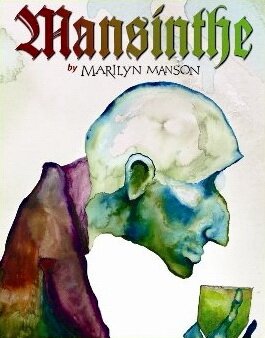
«Mansinthe» — это марка абсента выпускаемая от имени Мэрилина Мэнсона. Пре-релиз напитка состоялся 28 июня 2007 года в Германии на открытии выставки картин Мэнсона. Официально абсент вышел в продажу 25 августа 2007 года, его можно заказать в ряде онлайн магазинов стран Европы и США. На территории штатов «Mansinthe» стал доступен в 2009 году, спустя два года после легализации абсента в стране.
«Mansinthe» — это сильноалкогольный напиток зеленого цвета с анисовым вкусом. Он настоен на травах, включая цветы и листву Полыни горькой (Artemisia absinthium) — содержание туйона — 10 мг. Содержание алкоголя в стандартной версии «Mansinthe» — 66,6%. На пре-релизе также можно было приобрести и другую версию напитка — Образец #35, с содержанием спирта 68%.
Абсент Мэнсона выпускается в бутылках объемом 0,2 (13€) и 0,7 литров (36€). Также есть вариант — 2 бутылки, каждая объемом 0,7 литра, плюс стакан с логотипом — за 72€.
Possible Side Effects of Maltodextrin and Sucralose
Sucralose and maltodextrin are two of the main ingredients in the artificial sweetener Splenda. Food and Drug Administration for use as a sweetener in 1998 and is considered safe. However, both of these ingredients have the potential to cause side effects in at least some individuals, especially if consumed in large amounts.
Potential Sucralose Adverse Effects
Like some other artificial sweeteners, sucralose can cause gas, bloating and diarrhea and can have laxative effects. Sucralose may also be associated with increased symptoms of inflammatory bowel disease, reports the Center for Science in the Public Interest, although the research in this area is still preliminary. Limiting the amount of sucralose you consume can help prevent these potential side effects. Food and Drug Administration recommends consuming no more than 2.3 milligrams of sucralose per pound of body weight per day, or about 341 milligrams for a 150 pound person. To put this into perspective, a diet soda sweetened with sucralose typically contains between 40 and 60 milligrams of sucralose.
Potential Maltodextrin Side Effects
Maltodextrin is often combined with sucralose to give it more bulk, making it possible for people to use it in a 1 1 ratio when substituting for sugar. The maltodextrin used in Splenda is made from cornstarch, but this texturizer can also be made from rice, potato or wheat. In the case of wheat, it will be noted on the label, as this could cause symptoms of an allergic reaction, including rash, swelling and difficulty breathing. Maltodextrin made from wheat could also cause side effects in people with celiac disease or gluten sensitivity. These include diarrhea, bloating, rash and muscle cramps.
Sucralose Plus Maltodextrin and Weight
Artificial sweeteners are sometimes used in an attempt to cut calories and lose weight. However, some research indicates that these sweeteners may have the opposite effect, according to an article published in the Yale Journal of Biology and Medicine in June 2010. Further research is necessary to determine whether it has this effect in people as well. Sucralose may also increase blood sugar levels to some extent. A study published in Diabetes Care in April 2013 found that people experienced increases in blood sugar after drinking a beverage sweetened with sucralose but didn’t experience these increases when drinking water, which was the control beverage.Articles Connexes:
